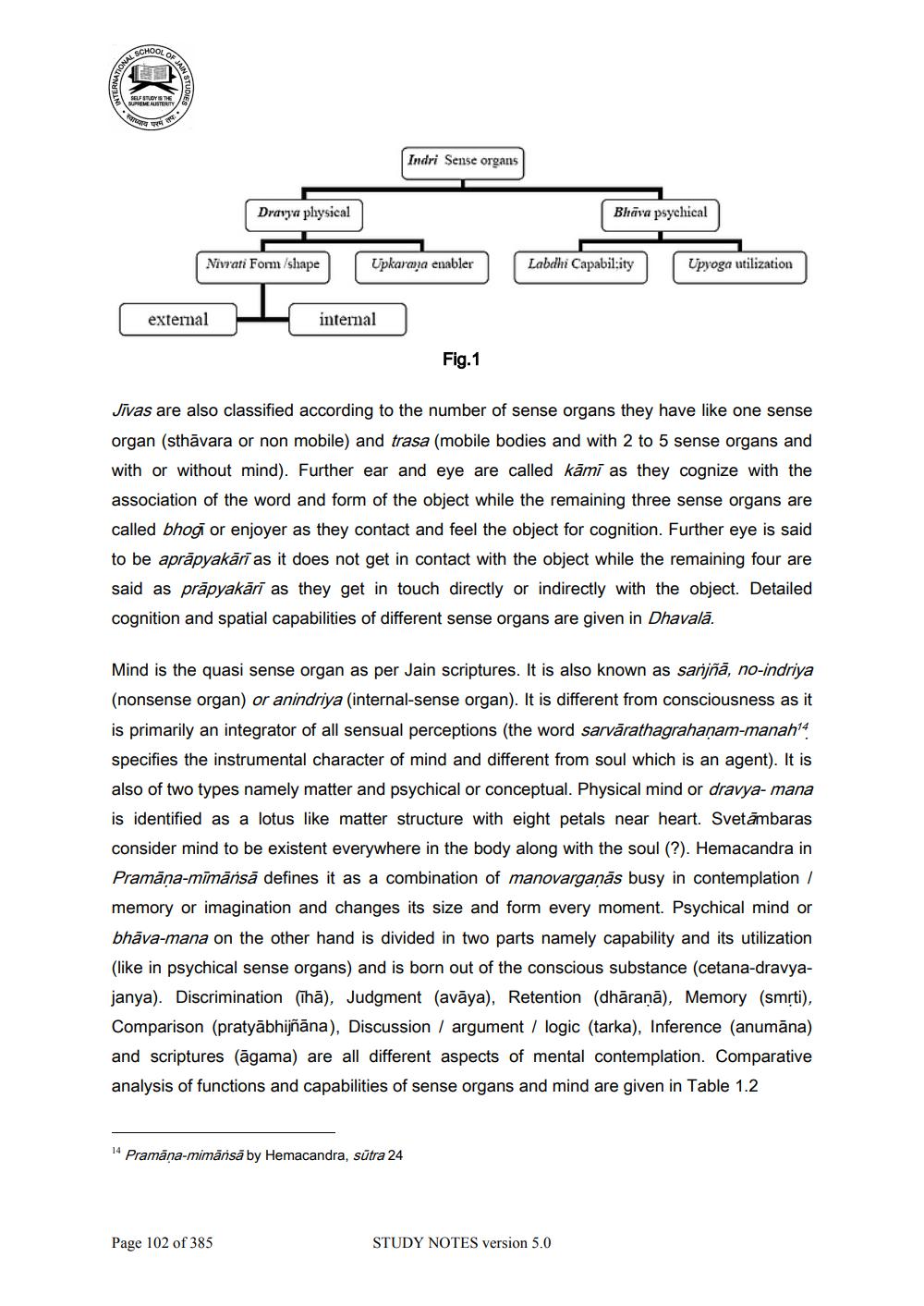________________
INTERNATION
SCHOOL OF
SELF STUDY IS THE
SUPREME AUSTERITY
पाध्याय परम
तफ
AN STUDIES
Nivrati Form/shape
external
Dravya physical
Upkaraya enabler
internal
Page 102 of 385
Indri Sense organs
14 Pramana-mimänsä by Hemacandra, sūtra 24
Bhāva psychical
Labdhi Capability
Fig.1
Jīvas are also classified according to the number of sense organs they have like one sense organ (sthāvara or non mobile) and trasa (mobile bodies and with 2 to 5 sense organs and with or without mind). Further ear and eye are called kāmī as they cognize with the association of the word and form of the object while the remaining three sense organs are called bhogi or enjoyer as they contact and feel the object for cognition. Further eye is said to be aprāpyakārī as it does not get in contact with the object while the remaining four are said as präpyakārī as they get in touch directly or indirectly with the object. Detailed cognition and spatial capabilities of different sense organs are given in Dhavalā.
Mind is the quasi sense organ as per Jain scriptures. It is also known as sanjñā, no-indriya (nonsense organ) or anindriya (internal-sense organ). It is different from consciousness as it is primarily an integrator of all sensual perceptions (the word sarvärathagrahanam-manah" specifies the instrumental character of mind and different from soul which is an agent). It is also of two types namely matter and psychical or conceptual. Physical mind or dravya- mana is identified as a lotus like matter structure with eight petals near heart. Svetambaras consider mind to be existent everywhere in the body along with the soul (?). Hemacandra in Pramana-mimārisā defines it as a combination of manovargaṇās busy in contemplation / memory or imagination and changes its size and form every moment. Psychical mind or bhāva-mana on the other hand is divided in two parts namely capability and its utilization (like in psychical sense organs) and is born out of the conscious substance (cetana-dravyajanya). Discrimination (Tha), Judgment (avāya). Retention (dhāraṇā), Memory (smrti), Comparison (pratyābhijñāna), Discussion / argument / logic (tarka), Inference (anumāna) and scriptures (agama) are all different aspects of mental contemplation. Comparative analysis of functions and capabilities of sense organs and mind are given in Table 1.2
Upyoga utilization
STUDY NOTES version 5.0




